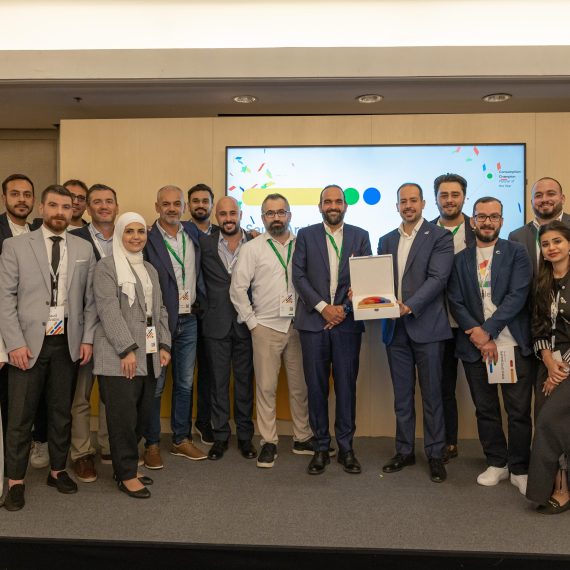The conversation around climate change has decisively shifted. It’s no longer a distant environmental concern,it is a present-day business challenge and, more importantly, a monumental economic opportunity. Companies that treat sustainability as an optional add-on are quickly finding themselves at a competitive disadvantage. The new reality is that Green Technology (Green Tech), often used interchangeably with Clean Tech or Climate Tech, is not just about reducing carbon footprints; it’s about building resilient, efficient, and profitable businesses for the future.
The Business Case: Beyond Compliance
The value proposition of Green Tech extends far beyond meeting regulatory mandates; it creates genuine commercial advantage:
- Risk Mitigation: Companies relying on resource-intensive, linear supply chains face growing physical and transitional risks. Green Tech investments, such as resilient energy infrastructure and sustainable material sourcing, act as an insurance policy against volatile energy costs and disruptive climate events.
- Competitive Edge and Brand Value: Today’s consumers and, critically, institutional investors are demanding verifiable commitment to ESG (Environmental, Social, and Governance) performance. Integrating Green Tech improves brand reputation, attracts top-tier talent seeking purpose-driven work, and unlocks access to sustainability-linked financing.
- Operational Efficiency and ROI: Investing in efficiency pays dividends. Technologies like IoT-enabled smart building management and industrial waste heat recovery immediately reduce energy consumption and operational costs. While initial capital expenditure can be high, the long-term Return on Investment (ROI) from savings, reduced regulatory fines, and new market access is compelling.
Core Pillar 1: Driving the Energy Revolution
The decarbonization of energy production is the largest opportunity in Green Tech. While solar and wind are established, the next wave of innovation is centered on solving their intermittency:
- Advanced Energy Storage: This is the lynchpin of a fully renewable grid. Next-generation lithium-ion batteries and promising technologies like flow batteries and solid-state solutions are making it feasible to store massive amounts of clean power, ensuring reliability regardless of weather conditions.
- Green Hydrogen: Produced by electrolyzing water using renewable electricity, green hydrogen offers a zero-emission fuel source critical for hard-to-abate sectors like long-haul shipping, aviation, heavy-duty trucking, and industrial processes (e.g., steel and cement production).
- Smart Grids and Digitization: Integrating Artificial Intelligence (AI) and sensors into the energy grid allows utilities and businesses to predict demand, optimize energy flow, and manage decentralized power sources more effectively, drastically reducing overall waste.
Core Pillar 2: Pioneering the Circular Economy
The traditional “take-make-dispose” model is ecologically and economically unsustainable. Green Tech is enabling the shift toward a Circular Economy where waste is minimized, and resources are kept in use for as long as possible.
- Advanced Recycling and Material Science: Breakthroughs in chemical recycling allow plastics that were previously unrecyclable to be broken down into their base molecules for reuse. Furthermore, the development of bio-based and biodegradable materials offers genuine, sustainable alternatives to fossil fuel-derived products.
- Product-as-a-Service (PaaS): Technology allows companies to track, maintain, and recover their products, shifting the business model from selling goods to selling performance. This incentivizes durability and efficient resource management.
Core Pillar 3: The Frontier of Climate Tech
Beyond energy and circularity, several emerging technologies are set to redefine industrial landscapes:
- Carbon Capture, Utilization, and Storage (CCUS): While controversial for some, CCUS remains essential for sectors that cannot fully decarbonize through efficiency alone. Innovations are focusing on reducing the energy intensity and cost of capturing $\text{CO}_2$ directly from industrial sources (point source) or even from the air (Direct Air Capture).
- Sustainable Agriculture and Food Systems: Vertical and indoor farming significantly reduce water consumption (up to 95%) and eliminate the need for long-distance transportation. Additionally, precision agriculture utilizes AI and remote sensing to manage irrigation, fertilizer use, and pest control with hyper-efficiency, reducing both cost and environmental runoff.
- Electrification of Logistics: The global transition to electric vehicles (EVs) is just one part of the story. Green Tech is developing new fueling options—like sustainable aviation fuels (SAFs) and ammonia for shipping—to decarbonize the world’s most difficult transportation links.
The Path Forward: Overcoming Adoption Challenges
The biggest hurdles to Green Tech adoption are often initial capital expenditure and scalability. Revolutionary technologies require significant upfront investment, which can be prohibitive for small and medium-sized enterprises (SMEs).
Addressing this requires a collaborative approach:
- Policy Support: Government incentives, tax breaks, and favorable procurement policies must be maintained and expanded to de-risk investment.
- Blended Finance: Combining public and private capital is essential for financing large-scale infrastructure projects, such as commercial-scale green hydrogen plants or CCUS facilities.
- Talent Development: The transition requires a highly specialized workforce. Companies must invest in training and partnerships to secure expertise in areas like climate modeling, green engineering, and data science for sustainability metrics.
Conclusion: Investing in Resilience
Green Tech is rapidly moving from an experimental domain to a core component of business strategy. The choice facing leadership teams today is clear: continue with the status quo, facing ever-increasing risks and costs, or embrace innovation to build a future that is environmentally sound and economically competitive.
The companies that succeed in the 21st century will be those that view Green Tech not as a compliance burden, but as the engine of their next growth cycle, transforming environmental responsibility into market advantage and enduring resilience.







Leave a Comment